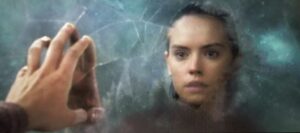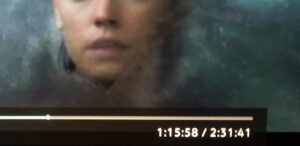What Makes a Good Action Scene?
Terry Odell

Image by Dean Moriarty from Pixabay
We don’t go out to movies anymore, and don’t watch too many on TV, either. But one thing I know is that prolonged “action” scenes, be they gunfights, fistfights, or car chases, have me thinking one thing … “the scriptwriters ran out of dialogue, so they’re filling in much needed minutes of screen time with bells and whistles.” Worse for me is when they come at the beginning of a movie and the viewer has no idea who’s who, or what the stakes are.
Who’s the good guy? Do I care yet? Probably not. Opening books with battle scenes isn’t a good idea, either.
“Action” doesn’t mean people have to be killing each other.
I’m not a violent person (coming of age in the 60’s—make love, not war), but I frequently have to include action scenes in my books, especially the Blackthorne, Inc., covert ops series. I’ve opened a good number of the books in that series with an action scene that may or may not be closely attached to the plot. My daughter calls them my “MacGyver Opening Gambits.” My little secret—because I’m not fond of writing violence, these gambits more often than not result in a character being called on the carpet and assigned to non-combat type duty, which gets me back into my comfort zone.
What elements are needed to make a good action scene? My search for “action scenes” resulted in link after link to “fight scenes.” Fight scenes might be action scenes, but are all action scenes fight scenes? I think not. I kept digging.
According to The Writing Cooperative, “An action scene is any scene where physical events flow at a rapid clip.”
Janice Hardy, in her Fiction University site, gives these elements for writing effective action scenes:
- Get in a Character’s Head – show some thoughts and feelings of the character to connect the reader.
- Let it Get Personal – what are the stakes?
- Add a Surprise or Revelation – if the outcome is predictable, why read on? Even if it is, reveal something about the character, or something that affects the plot
- Pace Yourself – short sentences, smooth flowing text.
You don’t want to write an action scene that is nothing more than a blow-by-blow (no pun intended) description of each move—Sue had an excellent post about writing a dance scene. Just including the individual steps makes for a yawner. Add the character’s thoughts. A bit of dialogue.
How does this scene (can I call it a ‘classic’ at this point?) fit Hardy’s elements?
Would it have been nearly as effective if it had been the opening scene of the movie? Would the scene have been as effective without the cutaways? Without the dialogue?
What about this? (From Rooted in Danger)
Setup: Fozzie and his covert ops team are in the company’s private jet en route to rescue a teammate.
Fozzie snapped awake when he heard a loud boom, followed by equally loud, “Oh shit,” from the pilot over the PA.
He had his seatbelt unfastened before he heard Hotshot call, “Fozzie, up front. Now.”
“On it.” Fozzie rushed forward. The right side of the sky glowed through the porthole. The plane tipped in that direction, and he grabbed the nearest seatback to keep his balance. He felt the plane losing airspeed.
“Bad Thing. Number two engine,” Cheese said. “Need some help.”
Fozzie slid into the second seat and slapped on a headset. The plane yawed more toward the right. The red master warning light came on. In too-rapid succession, the displays showed systems shutting down.
“We’re flying heavy,” Cheese said. “We need both engines or we’ll have to go down.”
Ditching was definitely not an option. Fozzie knew they carried extra fuel to cover the distance. Any delays might cost Grinch his life. But now, Fozzie was more focused on his own.
“Shut off the damn buzzers,” Cheese said. “Can you get a visual on the engine? See anything?”
Fozzie glanced out of the cockpit seeing individual blades where there should have been a blur of propellers. “No obvious damage.”
Cheese’s hand grabbed the lever beside the throttle. Fozzie watched the angle of the propeller blades shift as Cheese feathered them to reduce drag.
“Trying a restart,” Cheese said.
“No worries,” Fozzie said, sweat filming his palms.
Cheese flipped the starter switch. Nothing.
Lots of worries.
“Okay, let’s go to plan B,” Cheese said. “Restart protocol. Book’s behind my seat.”
Fozzie snagged the notebook. Quickly flipped to the emergency section. Read each step aloud. Focused on Cheese’s “Rogers.”
“Need more airspeed,” Cheese said. “Watch the N1 indicator and tell me as soon as it hits twelve.”
Fozzie glued his gaze to the small circular gauge. Instead of a healthy ninety-five, the needle hovered at the four percent mark.
“Hang tight,” Cheese announced. “We’re going to play roller coaster. The E-ticket kind.”
Fozzie tightened his harness as Cheese tilted the plane’s nose down. He concentrated on keeping his breathing steady as his stomach plunged. He watched the needle creep across the dial. Six. Eight. Ten. Eleven.
“Now,” he said as soon as it hit twelve.
Cheese pushed up on the fuel condition lever.
Fozzie heard the engine whine as it came back to life. Outside, the propellers shifted angle and picked up speed. He fought the increasing g-forces and his stomach did a reverse trip as Cheese pulled out of the dive and brought the plane to altitude.
After several reverent moments contemplating the familiar sounds and vibrations of normal flight, Fozzie turned to Cheese and slipped the notebook back into its pocket. “Good onya, mate.”
“Would rather not have to do it again,” Cheese said, rubbing his thigh. “Man, keeping her steady is a bitch on the quads.” Sweat trickled down his face. He ran his fingers over the instrument panel as if stroking a lover. “That’s my girl.”
Can you share “non-fight” action scenes that have been done well?
And, on another note, I recently had my website completely overhauled. I’d say it’s 98.7% done (although they’re never really done. What do you think?
How can he solve crimes if he’s not allowed to investigate?
 Gordon Hepler, Mapleton’s Chief of Police, has his hands full. A murder, followed by several assaults. Are they related to the expansion of the community center? Or could it be the upcoming election? Gordon and mayor wannabe Nelson Manning have never seen eye to eye. Gordon’s frustrations build as the crimes cover numerous jurisdictions, effectively tying his hands.
Gordon Hepler, Mapleton’s Chief of Police, has his hands full. A murder, followed by several assaults. Are they related to the expansion of the community center? Or could it be the upcoming election? Gordon and mayor wannabe Nelson Manning have never seen eye to eye. Gordon’s frustrations build as the crimes cover numerous jurisdictions, effectively tying his hands.
Available now.
 Terry Odell is an award-winning author of Mystery and Romantic Suspense, although she prefers to think of them all as “Mysteries with Relationships.”
Terry Odell is an award-winning author of Mystery and Romantic Suspense, although she prefers to think of them all as “Mysteries with Relationships.”






 The prime example of Bitter Experience is Casablanca. Rick Blaine had his heart shattered when the woman he loved, Ilsa Lund, abandoned him in Paris just before the Nazi occupation. He has set up shop in Casablanca to forget her. His café is allowed to operate because he takes no sides in the war. His Call to Adventure comes when Ugarte, the scheming rat who murdered German couriers to obtain the valuable Letters of Transit, begs Rick to hide him from the police. Rick refuses with the classic line, “I stick my neck out for nobody.”
The prime example of Bitter Experience is Casablanca. Rick Blaine had his heart shattered when the woman he loved, Ilsa Lund, abandoned him in Paris just before the Nazi occupation. He has set up shop in Casablanca to forget her. His café is allowed to operate because he takes no sides in the war. His Call to Adventure comes when Ugarte, the scheming rat who murdered German couriers to obtain the valuable Letters of Transit, begs Rick to hide him from the police. Rick refuses with the classic line, “I stick my neck out for nobody.” A refusal out of fear or self-doubt must be overcome with a strong emotional jolt. In Finding Nemo, Marlin, Nemo’s father, is afraid of the open ocean because of a past traumatic event—a barracuda attack that killed his wife, Cora, and most of their eggs. He is therefore overprotective of his surviving son, Nemo. Nemo keeps calling his father to adventure—exploring the sea, finding a sea turtle, etc. But Marlin refuses. He is full of fear and self-doubt about his ability to protect his son.
A refusal out of fear or self-doubt must be overcome with a strong emotional jolt. In Finding Nemo, Marlin, Nemo’s father, is afraid of the open ocean because of a past traumatic event—a barracuda attack that killed his wife, Cora, and most of their eggs. He is therefore overprotective of his surviving son, Nemo. Nemo keeps calling his father to adventure—exploring the sea, finding a sea turtle, etc. But Marlin refuses. He is full of fear and self-doubt about his ability to protect his son.


